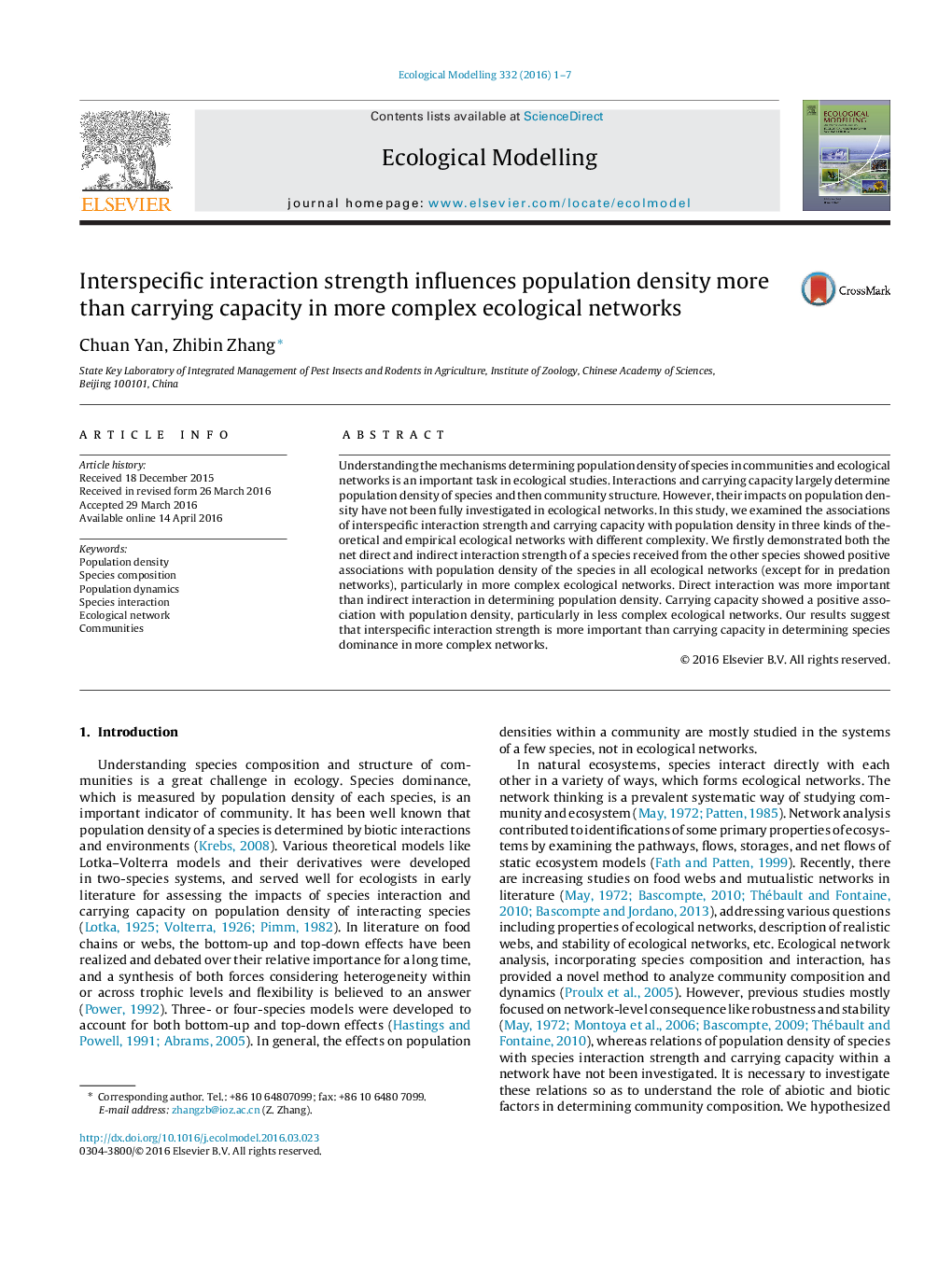| Article ID | Journal | Published Year | Pages | File Type |
|---|---|---|---|---|
| 4375547 | Ecological Modelling | 2016 | 7 Pages |
•Roles of interaction and carrying capacity for population density are examined.•Interaction is more important than carrying capacity in more complex networks.•Direct interaction is more important than indirect interaction.•Performance of interspecific interaction increases with network complexity.•Performance of carrying capacity decreases with network complexity.
Understanding the mechanisms determining population density of species in communities and ecological networks is an important task in ecological studies. Interactions and carrying capacity largely determine population density of species and then community structure. However, their impacts on population density have not been fully investigated in ecological networks. In this study, we examined the associations of interspecific interaction strength and carrying capacity with population density in three kinds of theoretical and empirical ecological networks with different complexity. We firstly demonstrated both the net direct and indirect interaction strength of a species received from the other species showed positive associations with population density of the species in all ecological networks (except for in predation networks), particularly in more complex ecological networks. Direct interaction was more important than indirect interaction in determining population density. Carrying capacity showed a positive association with population density, particularly in less complex ecological networks. Our results suggest that interspecific interaction strength is more important than carrying capacity in determining species dominance in more complex networks.
